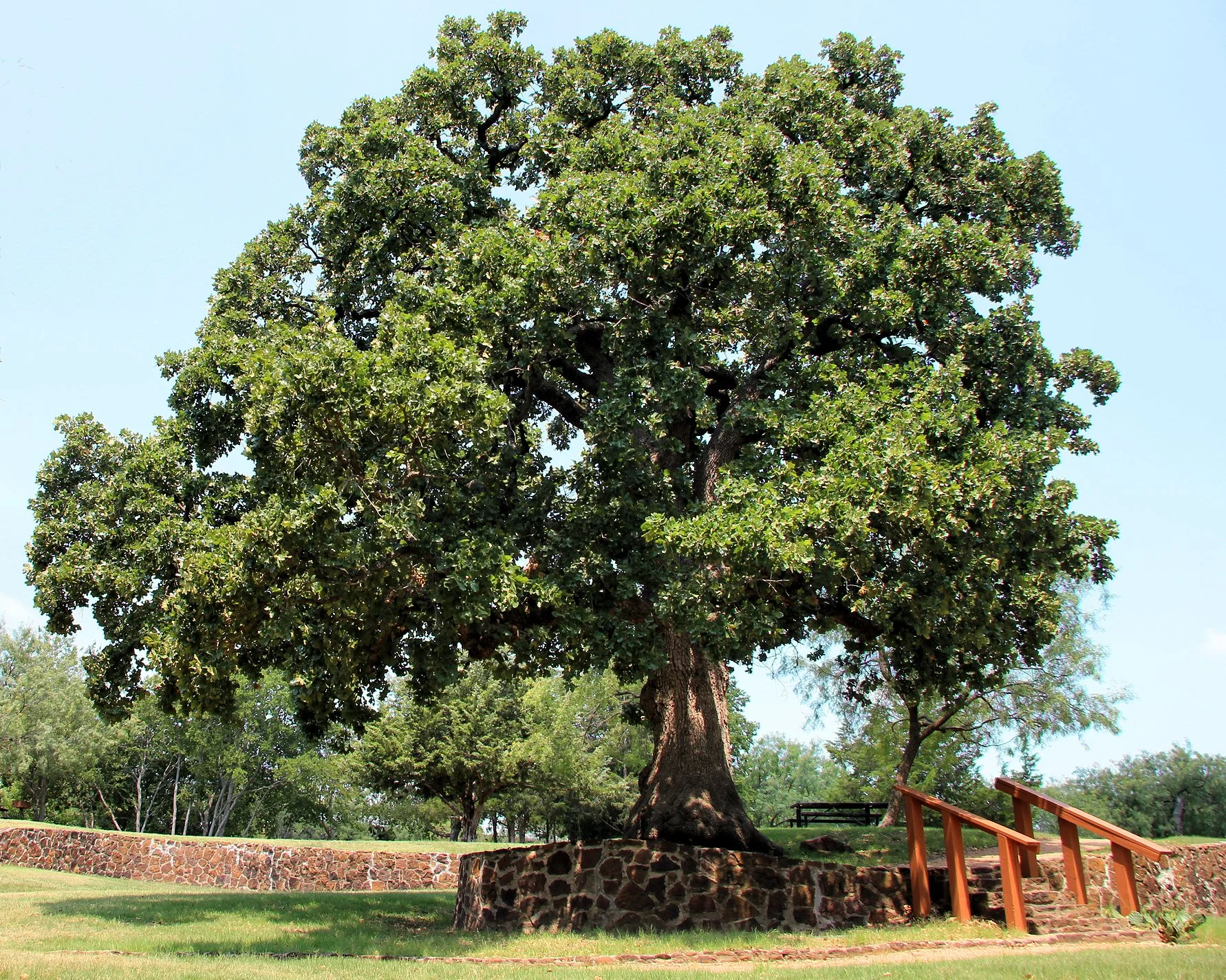April’s Native Maryland Plant
Quercus stellata Wangenh.
(KWER-kus stel-LA-ta)
Common Name: Post Oak
I love being in the company of big trees, like oaks - wonderful things happen when you’re in their presence. You hear and see more life and you experience their majesty. Many oak trees have lived for generations and have had a front seat to our country’s history and our changing climate. Big trees deserve more respect.
In December, I was planning some winter walks and thought I’d seek out some of the Maryland state champion trees in public areas. As I was examining the list it occurred to me that the Quercus stellata in my front yard was a rather large specimen. I wondered, “How does it compare to the champions out there?” I took some measurements and compared them to the trees listed. Imagine my excitement when I realized that my tree was measuring just slightly bigger than the Anne Arundel County specimen! Could it be I had a champion on my property? I emailed the Maryland Big Tree Program (MBTP)(1), and included photos of the tree, its leaves and bark, to provide accurate tree specimen identification. They responded within an hour and agreed to visit to confirm my measurements. On New Year’s Eve two MBTP volunteers came to my home, took additional measurements and photos, and within 2 weeks I received the news – I did indeed have the Anne Arundel County champion Quercus stellata in my front yard!
For most people this may not be something to write home about, for me it’s a big deal. All the native trees in my yard are important to me, but it’s the large ones, especially the oaks, that I’m most protective of as I look out at the small piece of the earth that is in my care. These trees remove the most carbon dioxide from the air, act as giant natural air conditions as they soak up water and perform transpiration(2), provide valuable soil stabilization, and in the case of oaks, support the most biodiversity, such as birds, mammals, and insect species(3).
Quercus stellata is not as large as most oaks and it’s not commonly found at nurseries; this one is likely a heritage tree that was part of the forest that existed before my town was established. It’s known for its drought-tolerance so it’s no surprise that it’s thriving in a westerly-facing area of my yard, on a very slight slope where it never sits in water. Coincidentally, it’s growing not far from two saplings of the historic Wye Oak (Quercus alba), the state champion tree that succumbed to storm damage in 2002.
As you’re considering what plants to add to your landscape this spring, consider planting an oak sapling, a plant that will provide incredible benefit to the watershed as soon as it’s in the ground. No matter the size of the oak, it will be a fine tree and might even grow to be a champion. Wouldn’t that be grand?
1 https://www.mdbigtrees.org/ BT3960 – Q. stellata
2 The process by which plants give off water vapor through openings in their leaves (stoma)
3 Tallamy, 2021 - The Nature of Oaks
Alison Milligan – Mstr Gardener/Mstr Naturalist /Watershed Steward
Chesapeake Bay Landscape Professional (CBLP)/AA Co Tree Trooper
aligmilligan@gmail.com




